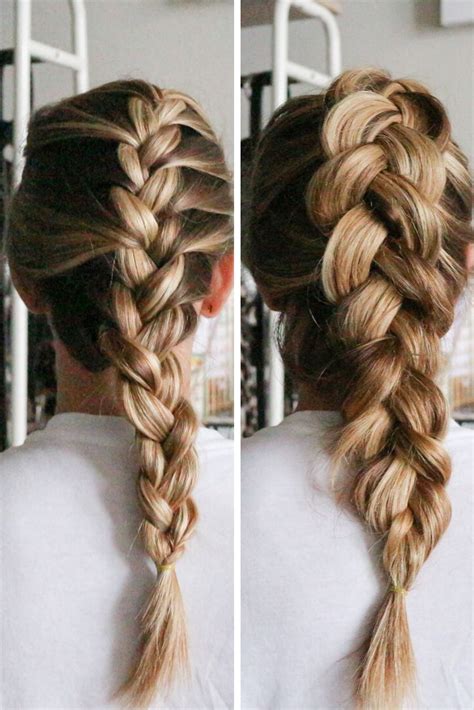The Evolution of Braiding
Braiding has been an integral part of human history for centuries, dating back to ancient Egypt and Greece. From simple plaits to elaborate crown braids, these intricate hairstyles have served both aesthetic and functional purposes. Today, braiding continues to captivate hair enthusiasts worldwide, with countless variations and techniques to choose from. Two of the most popular and versatile braids are the French braid and the Dutch braid, each offering unique characteristics and advantages.

French Braid: A Timeless Classic
- Definition: A French braid is a three-strand braid in which new strands are added from the sides at each crossing.
- Appearance: Flat and smooth, creating a delicate and elegant look.
- Popularity: Has been a staple hairstyle for centuries and remains universally flattering.
- Suitable for: All hair types and lengths, from short to long.
Dutch Braid: A Bold and Sporty Alternative
- Definition: A Dutch braid, also known as an inverted French braid, is similar to a French braid but with the new strands added under the existing strands at each crossing.
- Appearance: Raised and voluminous, giving a more rugged and athletic aesthetic.
- Popularity: Gaining popularity among both men and women as a sporty and edgy hairstyle.
- Suitable for: Thick, coarse, or medium-length hair.
Head-to-Head Comparison
| Characteristic | French Braid | Dutch Braid |
|---|---|---|
| Appearance | Flat and smooth | Raised and voluminous |
| Texture | Delicate and elegant | Bold and rugged |
| Difficulty | Moderate | Easy |
| Suitable hair types | All hair types | Thick, coarse, or medium-length hair |
| Versatility | Suitable for both formal and casual occasions | Ideal for sporty or casual settings |
Pain Points and Motivations
- Pain Points: Braiding can be time-consuming and require patience, especially for beginners. Complex braiding styles may also be challenging to create without assistance.
- Motivations: Braiding offers numerous benefits, including hair protection, versatility, style expression, and a boost in confidence.
Effective Strategies for Mastering Braiding
- Practice: The key to mastering braiding is practice. Start with simple plaits and gradually progress to more complex styles.
- Use a brush: Brush your hair thoroughly to remove tangles and prevent breakage during braiding.
- Section your hair: Divide your hair into three equal sections to ensure even distribution and prevent lopsided braids.
- Secure the ends: Tie off the end of the braid with a hair elastic or ribbon to prevent unraveling.
Tips and Tricks for a Perfect Braid
- Add hairspray: Mist your hair with a light hold hairspray to tame flyaways and keep the braid in place.
- Use a headband: A headband can help keep your hair out of your face and prevent strain on your neck and scalp.
- Accessorize: Enhance your braid with hair clips, ribbons, or beads to add a touch of flair and personality.
- Experiment with variations: Don’t be afraid to try different braiding techniques, such as fishtail braids, rope braids, or waterfall braids.
Innovative Applications of Braiding
- Sports performance: Braiding can provide hair protection and reduce drag for athletes, enhancing performance in sports like swimming, running, or cycling.
- Cosplay and costume design: Elaborate braids can add intricate details and characterization to costumes for cosplay, theater, and other performance art forms.
- Therapeutic massage: Scalp braiding can offer relaxation and stress relief, similar to a scalp massage.
- Hair extensions: Braiding can be used to seamlessly integrate hair extensions into natural hair, creating length, volume, or color contrast.
Conclusion
French and Dutch braids are both versatile and timeless hairstyles that offer a wide range of aesthetic and functional applications. Whether you prefer the delicate elegance of a French braid or the sporty boldness of a Dutch braid, these braiding techniques can enhance your style and protect your hair. With practice, patience, and creativity, anyone can master the art of braiding and create stunning hairstyles that turn heads.
